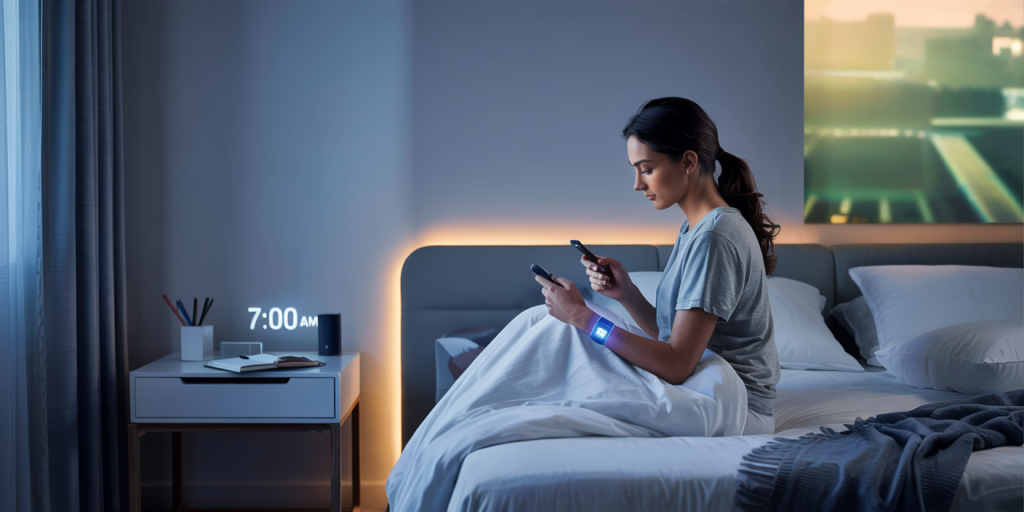Morning Routines of Successful People (and How to Build Yours)
A well-crafted morning routine can be a powerful catalyst for productivity, mental clarity, and overall well-being. Successful individuals often credit their morning habits as a foundation for their achievements. Morning routines are more than just a sequence of tasks; they represent intentional actions that shape the mindset and momentum for the entire day. In this article, we will explore the morning routines of notable successful people, analyze the psychology behind these habits, and provide guidance on building a personalized morning routine that can boost performance and enhance life quality.
Why Morning Routines Matter: Science and Success Stories
The concept of a morning routine transcends anecdotal praise. Scientific research supports that structured mornings enhance cognitive function and emotional regulation. According to a study published in *Frontiers in Human Neuroscience* (2015), morning light exposure and physical activity contribute significantly to improved alertness and mood throughout the day. Furthermore, a survey by The Huffington Post found that 90% of highly successful people have consistent morning routines.
Icons like Oprah Winfrey, Tim Cook, and Benjamin Franklin exemplify how disciplined mornings contribute to sustained success. Oprah starts her day with meditation and exercise, fueling a balanced approach to business and well-being. Tim Cook wakes up at 3:45 a.m., using the quiet morning hours to read emails—a practice that keeps him ahead of his responsibilities as Apple’s CEO. Benjamin Franklin followed a routine where he asked himself, “What good shall I do this day?” promoting purposeful reflection before starting work.
Understanding that a well-structured morning can foster mental sharpness and emotional calm is crucial. This foundation motivates many to design their routines to increase productivity, reduce stress, and align daily actions with long-term goals.

Common Elements in Successful Morning Routines
While morning routines vary dramatically in specifics, successful people often share several foundational elements in their practices. These commonalities can be categorized into mental preparation, physical activity, nutrition, and goal setting.
Mental preparation frequently involves mindfulness or meditation. Arianna Huffington practices 20 minutes of meditation each morning, helping build resilience and emotional balance in her demanding media career. Meditation helps reduce cortisol levels (the stress hormone) and fosters a mindset of focus.
Physical activity is another staple. Richard Branson credits his daily exercise with boosting energy and enhancing productivity. Exercise releases endorphins and stimulates brain-derived neurotrophic factor (BDNF), which supports brain health.
Nutrition also plays an important role. Barack Obama starts his day with a healthy breakfast, ensuring sustained energy release. Balanced meals minimize blood sugar spikes and cognitive dips.
Goal-setting or journaling is often the final component. Writing down daily priorities or intentions gives a sense of control and motivation. Benjamin Franklin’s morning questions serve as a classic example of purposeful self-reflection.
The table below summarizes these common elements among a few successful figures:
| Name | Mental Preparation | Physical Activity | Nutrition | Daily Goal Setting |
|---|---|---|---|---|
| Oprah Winfrey | Meditation | Yoga / Exercise | Balanced meal | Journaling |
| Tim Cook | Early email review | Morning walk | Healthy breakfast | Task prioritization |
| Richard Branson | Positive affirmation | Golf / Swimming | Nutrient-rich | Daily reflection |
| Arianna Huffington | Meditation | Light exercise | Hydrating diet | Mindful intention setting |
| Benjamin Franklin | Morning questions | Walking | Simple meal | Self-assessment & planning |
This comparative analysis demonstrates how successful people design their mornings with active attention to physical, mental, and nutritional needs. Customizing these elements can be the first step toward constructing a functional routine.

Building Your Own Successful Morning Routine
Crafting a morning routine involves assessing your goals, personality, and lifestyle. The purpose is to create a sustainable sequence of activities that improve productivity and well-being.
Start by defining your priorities. Are you seeking enhanced focus, increased energy, stress reduction, or a combination? Knowing your objectives will guide your routine design.
Step two involves time allocation. Begin with small, manageable increments — even 15 minutes can have an impact. The morning routine does not need to consume hours; rather, consistency is key.
Incorporate one activity at a time. For example, start by waking up 30 minutes earlier to stretch or meditate. Once habituated, include exercise or journaling. Building gradually increases sustainability and reduces overwhelm.
Accountability also boosts adherence. Sharing your routine with a friend or using habit-tracking apps like Habitica or Streaks can motivate long-term commitment.
Practical example: Jessica Alba, founder of The Honest Company, wakes up at 5 a.m. to meditate, review her day’s goals, and then exercise. Her intentional start sets a proactive tone which helps manage her entrepreneurial and parenting demands.
Consider your environment. Designate a calm space free from distractions for meditation or journaling. Prepare your workout gear or breakfast ingredients the night before to minimize friction in the morning.
Finally, be adaptable. As life changes, modify your routine to fit new needs. The consistency isn’t about rigidity but about establishing positive momentum.
The Role of Technology and Tools in Morning Routines
Technology can both enhance and hinder morning routines. Successful people use apps and devices purposefully to support habits rather than distract.
Meditation apps like Headspace and Calm guide users through mindfulness exercises. Tim Ferriss, author and entrepreneur, uses a combination of technology and analog journaling to maintain focus.
Wearables such as Fitbit or Whoop track sleep quality and physical activity, providing data to optimize wake times and exercise.
Smart lighting systems like Philips Hue simulate natural sunlight, helping regulate circadian rhythms and promoting easier wake-ups.
On the flip side, excessive phone or email checking can derail mornings by inducing stress. Studies from the University of California highlight that multitasking with devices early in the day reduces attention spans and increases anxiety.
Finding a balance is critical: leverage technology to automate or guide positive habits, but avoid digital overload during the initial morning hours. For instance, setting a “no-phone” rule for the first 30 minutes post-awakening is recommended by many productivity experts.
By combining traditional habits with selective technology, individuals can cultivate an efficient and enjoyable morning routine.
Morning Routines and Productivity: What Does Data Say?
Numerous studies underline the correlation between morning routines and elevated productivity. According to a research report by the American Psychological Association (APA), individuals who engage in morning rituals experience a 20% increase in reported productivity levels during work hours.
A study published in the *Journal of Applied Psychology* (2018) reveals that morning exercise correlates with higher task performance and better mood through the day. Participants who exercised before work showed 15% faster reaction times and fewer cognitive errors.
Beyond physical activity, goal-setting in the morning is associated with higher rates of goal attainment. Research from Dominican University found that people who wrote down goals and shared them with a friend were 33% more likely to achieve them than those who did not.
Comparative productivity statistics linked to morning routine practices:
| Habit | Productivity Increase | Cognitive Benefit | Reference |
|---|---|---|---|
| Morning Exercise | +15-20% | Faster reaction & mood | Journal of Applied Psychology 2018 |
| Meditation | +10-15% | Improved focus & stress regulation | Frontiers in Human Neuroscience 2015 |
| Goal Setting | +30-33% | Motivated behavior | Dominican University Study 2015 |
| Early Rising | +12-18% | Improved time management | Harvard Business Review 2017 |
These data metrics offer tangible incentives for integrating such habits into morning routines. Besides productivity, the health and emotional benefits further validate the investment in morning rituals.
The Future of Morning Routines: Trends and Innovations
With evolving work cultures, remote jobs, and technological advances, morning routines will continue adapting to meet new demands.
One key trend is personalization. AI-powered applications will increasingly tailor routines based on sleep data, mood tracking, and individual productivity rhythms. For example, platforms may suggest optimal wake times and task sequences per user analytics.
Another emerging area is biohacking—employing scientific techniques to optimize physical and mental performance. Morning routines may incorporate light therapy, nootropics, or specific breathwork exercises guided by smart devices.

Flexible working hours also challenge rigid morning routines, promoting adaptable habits that fit diverse schedules. Success may hinge on establishing rituals independent of clock time but aligned with personal biological peaks.
Sustainability and mindfulness are becoming more embedded. Instead of purely productivity-focused schedules, successful routines are trending toward holistic well-being, integrating nature exposure, gratitude practices, and digital detoxes.
Lastly, social accountability via online communities and coached programs offers support to maintain motivation and refine routines over time.
In summary, the future will likely blend technology, mindfulness, and flexibility to create more personalized and effective morning routines that address both professional and personal goals.
—
Crafting a morning routine inspired by successful people involves understanding fundamental habits and tailoring them to individual needs. Incorporating mental preparation, exercise, nutrition, and goal-setting into a cohesive plan can significantly increase productivity and well-being. Using data-driven insights and flexible approaches makes building sustainable routines achievable. As the landscape evolves, embracing technology and biofeedback will further refine the capacity to start each day purposefully and successfully.
